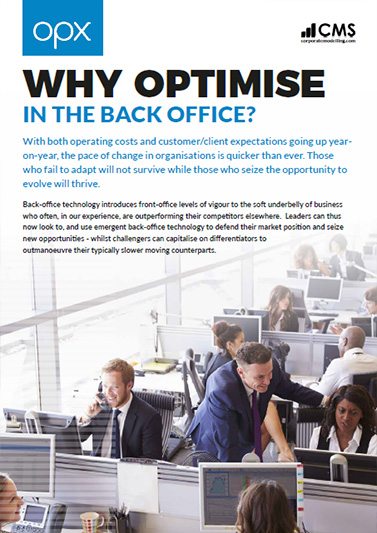At a recent industry forum, there was one topic on everyone’s lips – is marketing impacting back office planning? Here we share our thoughts, as well as our tips to ensure that any impact is a positive one!
In 2010, the Sunday finale of the X Factor drew viewing figures of 19.4 million. Whilst this will have provided extremely lucrative advertising opportunities for its sponsors TalkTalk, without effective planning, it would also have been a huge strain on call centre resources and the significant surge in activity would have challenged the back office to action effectively.
Fluctuations in marketing activity
Marketing campaigns change, literally with the seasons. The key drivers could be anything from competitive tariffs, special offers or reminders to renew/upgrade, but whatever the message, the call to action is loud and clear – get in touch, take action, fast.
A marketing push to mass audiences will drive a great deal of consumer activity and despite this influx, their expectations of customer service will stay the same. Failure to meet them will encourage consumers to seek an alternative, favour a competitor or otherwise undermine the campaign.
So, how is marketing impacting back office planning?
It is important to remember that for every customer request, a process is initiated e.g. changes to personal details. So, if around 19 million viewers tune in to the X Factor final, a sponsor like TalkTalk must be able to accommodate a significant % of that volume, whilst maintaining their standards of customer service.
Planning resource allocation in the back office accurately can only be effective with the right communication across the key stakeholders and teams in the organisation. Back office planning requires input from sales and marketing as to their expectation of volume. Failure to effectively communicate will result in poor planning, bottlenecks and error.
Top tops for ensuring marketing positively impacts the back office
- A workforce management software like OPX will take historical data and assess patterns based on people and workloads. Use this data when planning for high volumes and it will allow you to more accurately forecast a work plan.
- Look at a workload holistically and conduct organisational, rather than department-level, modelling in order to better understand and forecast their workload and schedule employees. This will ensure that whatever is thrown at the workforce, it will keep up the pace. (Call Centre Helper)
- Consider communications among all stakeholders – is it effective? Are individual department’s agendas compromising the performance of another department? Make sure everyone is aware of other department’s resource and capacity before executing large scale plans.
Is Automation the answer?
Needless to say, back office processing is becoming much more customer centric. By recognizing that high volume, low skilled tasks (online web forms, data gathering etc) can be automated, the back office is dramatically increasing their capacity to process greater volumes of tasks faster, cheaper and without the human errors, resulting in competitive, better quality customer service.
OPX
OPX is an award-winning, back office workforce management software that applies robotics process automation to automate high volume , rules-based processing. It provides visibility of processes and a holistic view of performance. By highlighting any inefficiencies, bottlenecks and skills shortages, it equips the back office to accommodate any fluctuations in the workload, whilst optimising the results achieved by employees.
Try your own, live demo of OPX and find out about how it can transform your back office operations, simply get in touch for more information.







 Thank you for your interest in our whitepaper. You can download Workforce Optimisation vs Workforce Management by clicking the button below.
Thank you for your interest in our whitepaper. You can download Workforce Optimisation vs Workforce Management by clicking the button below. Thank you for your interest in our case study. You can download the HCL IBS Case Study by clicking the button below.
Thank you for your interest in our case study. You can download the HCL IBS Case Study by clicking the button below. Thank you for your interest in our case study. You can download the ReAssure Case Study by clicking the button below.
Thank you for your interest in our case study. You can download the ReAssure Case Study by clicking the button below. Thank you for your interest in our case study. You can download the Student Loans Case Study by clicking the button below.
Thank you for your interest in our case study. You can download the Student Loans Case Study by clicking the button below. Thank you for your interest in our case study. You can download the Principality Building Society Case Study by clicking the button below.
Thank you for your interest in our case study. You can download the Principality Building Society Case Study by clicking the button below. Thank you for your interest in our whitepaper. You can download WorkFlow vs WorkForce Management by clicking the button below.
Thank you for your interest in our whitepaper. You can download WorkFlow vs WorkForce Management by clicking the button below. Thank you for your interest in our whitepaper. You can download Homeworking in Financial Services Operations by clicking the button below.
Thank you for your interest in our whitepaper. You can download Homeworking in Financial Services Operations by clicking the button below. Thank you for your interest in our whitepaper. You can download Workforce Optimisation for the Back Office by clicking the button below.
Thank you for your interest in our whitepaper. You can download Workforce Optimisation for the Back Office by clicking the button below. Thank you for your interest in our whitepaper. You can download Operational Workforce Management: Build or Buy? by clicking the button below.
Thank you for your interest in our whitepaper. You can download Operational Workforce Management: Build or Buy? by clicking the button below. Thank you for your interest in our whitepaper. You can download Homeworking & Back Office Workforce Optimisation by clicking the button below.
Thank you for your interest in our whitepaper. You can download Homeworking & Back Office Workforce Optimisation by clicking the button below. Thank you for your interest in our whitepaper. You can download Why Optimise in the Back Office? by clicking the button below.
Thank you for your interest in our whitepaper. You can download Why Optimise in the Back Office? by clicking the button below.